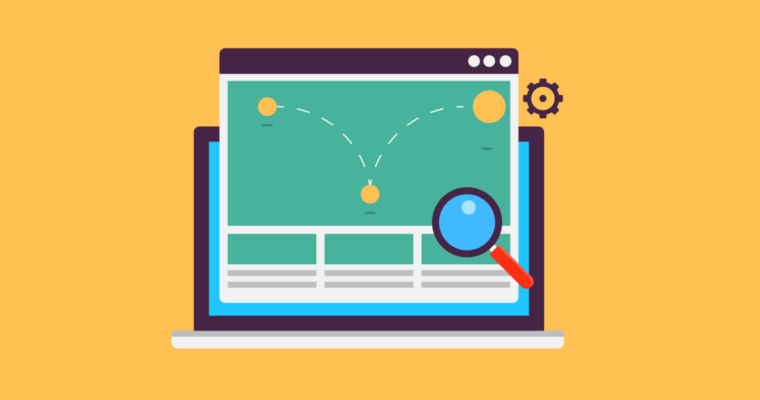In digital marketing, the bounce rate is the percentage of visitors the view only a single page of your website before they leave - or "bounce". Understanding your website bounce rate is an important part of optimizing your online business, and increasing sales. The best bounce rate for your website will depend on the type of website that you have.

High Bounce Rates
When you have a high bounce rate, this means that visitors are leaving your website very quickly. The (hopefully) obtain the information that they were looking for, and then leave. Some websites will naturally have a higher bounce rate than others. For example, a website that displays the local weather will have a pretty high bounce rate, as visitors quickly view the weather for the day and then leave.
If this is not by design, a high bounce rate can be indicative of problems. Identifying what is causing the high rate will be an important task, and can range from technical issues like page loading speed or even your web design and branding.
In some cases, it can be nothing to do with your website at all - some traffic sources just have different bounce rates. For example, social media referrals will often look at a single page, and then return to their social network. The bounce rate on these users is much higher than someone finding your website through an organic search result. It's important to realize the bounce rate is not the only factor - the social media users might actually have a higher conversion rate.
You need to experiment to find out what works best for your audience!
Low Bounce Rates
If you are a blog or online community, though, you want to work to lower your bounce rate. This means visitors are sticking around to view more than one page of your website. Generally this is a positive thing, because it can indicate that your visitors are interested with other content found on your website or are seeking out more information on their own.
Having a low bounce rate is often a good thing, but there are times when having a low bounce rate can actually indicate a problem with your tracking software. Having a bounce rate lower than 40% is often times due to an improper installation of your analytic tracking code. For example, it might be included twice - or within an ajax file that loads periodically. This will impact the accuracy of your tracking data, and prevent you from making educated changes to your website, or learning about your audiences.
How to Improve Your Website Bounce Rate
Improving your website bounce rate is once of the best ways to increase ROI of your ad campaigns, and marketing efforts overall. If a visitor leaves your website without taking effort, most of the times the effort getting them to your website is wasted. It's important not to forget brand awareness, though. You can also use remarketing strategies to bring these users back later.
The steps you need to take to reduce your website bounce rate will be unique to your website. The first step will be to understand why users are leaving your website. If they are obtaining the information they needed and leaving - there is not much you can do, other than to artificially extend their visit duration with form wizards, and ultimately an inferior user experience. Who wants to wait three minutes for information they should have received right away? For these websites, reducing their bounce rate can be an interesting challenge.
For most websites though, reducing the bounce rate can be achieved by checking these common reasons for having a high bounce rate. We have made a list for you to verify against your website, to see if this might be affecting your website.
Slow Loading Webpages
Nobody likes visiting a website with slowly loading pages. This creates a frustrating user experience, and if the website takes too long, users will abandon the visit before the page even finishes loaded. This is especially true of mobile users, who are more conscious about their data usage. Even if the delay is on your side, and not with passing too much data - they don't know that.
Improving your website speed is one of the biggest ways to improve your website bounce rate. It makes navigating your website much more enjoyable and allows them to quickly obtain information from different parts of your website, or complete multi-step processes like making an online purchase.
Cluttered or Absent Navigation
Make sure that users understand how to navigate your website, and that the areas if your website is well defined. If users are seeking for more information, but don't know how to find it on your website they will just leave and find it elsewhere - increasing your bounce rate. By having a clearly laid out navigation, you can help and encourage users to explore more content on your website, and lower your bounce rate.
In some cases, the opposite strategy can work too. Instead of having "Blog" in your navigation, you can do what we did, and label it "Learn". This provides the visitor with some intrigue, and allows them to explore out of their own interest. For many of those same users, they would skip over "blog", and never both to click it. You can a/b test changes to your navigation to see what works best for your audience!
Missing Call to Actions
Make sure that the next step for your visitors to take is made clear with prominent call to actions placed throughout your website. This may take place in the form of sign up buttons, recent comments, or the latest sales. For the purpose of reducing your bounce rate, call to actions will help guide users to other areas of your website.
In addition to making them highly visible, the phrasing and actual text used in your call to actions can make a big difference. From "Get Started" to "Register Free", you can find different call to action texts that work better for your audience. You can experiment with changing this, and evaluating the changes to your bounce rate (and conversion rate!)
Appealing Images or Video
Make sure that your landing pages feature high quality images, instead of just being a wall of text with a call to action button. Providing high quality images will help with your brand awareness, and help users understand the content of your web page better. You can also score bonus points in the SEO department when these images or videos become ranked in their appropriate search results.
Make sure you add descriptive ALT tags to your images!
Too Many Popups
We have discussed adding timed popups to your website before. When done carefully, these are great ways to boost conversions and capture leaves. However when they are done inappropriately, or without attention to detail, they will actively drive your visitors away from your website. Make sure that your popups are timed, or only appear once a user has began scrolling down a certain percentage of the page.
When you interrupt the user experience, you increase the bounce rate of your website because some users can't be bothered to wait, or deal with a poor user interface and trying to figure out how to close your popups. If you are going to use them, make sure they are easy to close and only show up when appropriate!
Autoplaying Videos
In addition to data conscious mobile users, having videos autoplay will disrupt the users experience and their natural exploration of your website: When you autoplay a sound or video, you are demanding their attention - either to the video, or to find the stop button. In both cases, you are rushing the visitor through the process of navigating your website. This is almost never a good idea.
By having the videos play only when the users perform an action (like clicking the play button) you can learn much more information than you can with an autoplaying video. For example, you can determine how many people actual click and watch the video - would changing where the video is on your web page, increase the number of clicks?
Targeting The Wrong People
Discussed earlier was the higher bounce rate associated with social media users. It is important to understand that the source of your visitors is one of the most important factors for controlling your bounce rate. If you are seeing a high bounce rate, you should consider where your visitors are coming from, and whether they are truly interested in your website. If you are getting just anyone to visit your website, you will see a higher bounce rate than if you were reaching out to the correct audience.
Make sure that when you are running any paid ad campaigns that you are properly targetting the correct type of audience. Not only do you need to find out who will be interested in your website, you need to know which groups of your visitors are most likely to take action and convert. The more you know about your audience, the more effective your marketing efforts will be.



